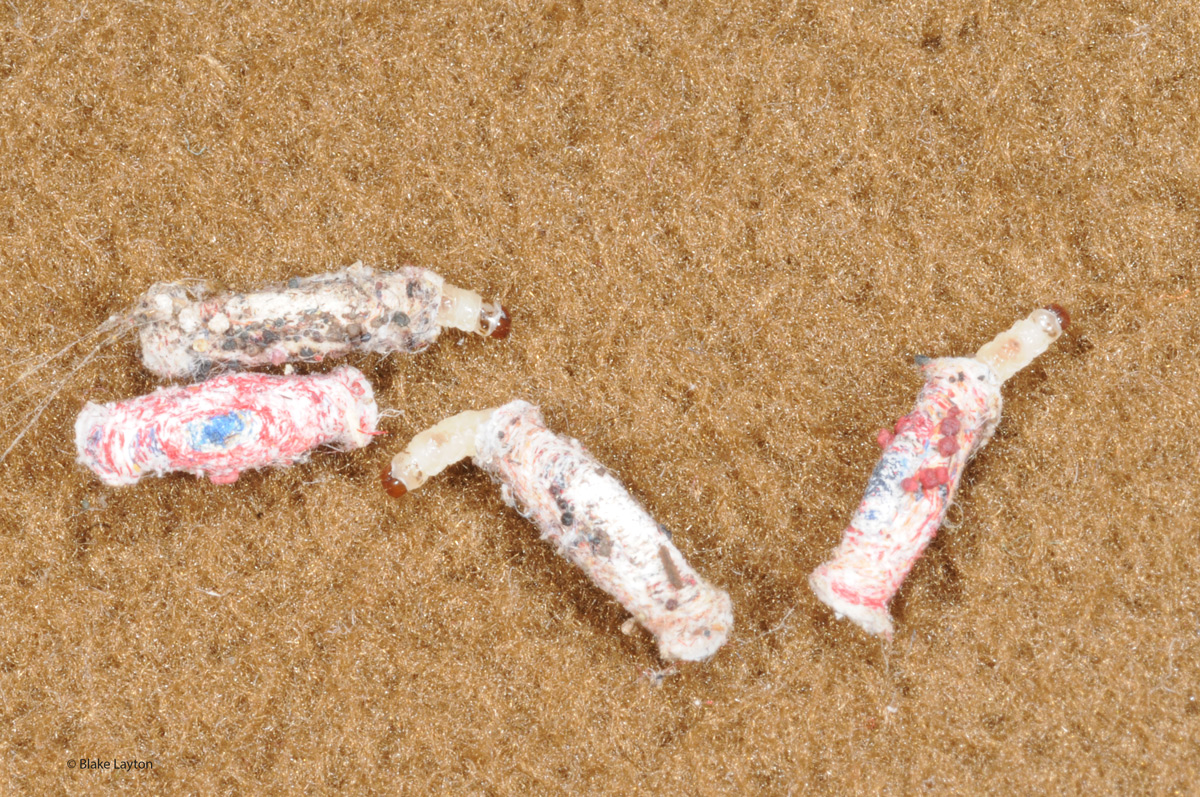Case-bearing Clothes Moth, Vol. 9, No. 01
Tineola pellionella
Order: Lepidoptera
Family: Tineidae
Clothes moths and carpet beetles can cause serious damage to expensive articles of clothing, especially if those articles are not stored properly during the off-season. Clothes moths rarely damage articles made of cotton or synthetic fabrics, but items made of wool, silk, fur, or any other “animal origin” fabrics are susceptible, and items that are soiled with sweat, dandruff and other stains are especially attractive to egg-laying moths. It is not the adult moths that cause the damage; they do not even have functional mouthparts, but it only takes a single caterpillar feeding on an expensive suit or fur to cause significant damage, and each female moth produces approximately 40 to 50 eggs.
Two species of clothes moths are common in the state, case-bearing clothes moths and webbing clothes moths, Tineola bisselliella, but damage is similar. As their name implies, case-bearing clothes moth larvae form protective cases using fibers of the fabric on which they are feeding. The caterpillars, which are approximately 1/3 inch long when mature, often concentrate their feeding along seams or heavily soiled areas of fabric. In nature, clothes moths feed on hides of dead animals, accumulations of animal hair, bird nests and wasp nests, and similar items.
As we move into spring, now is the ideal time think about storing winter clothes for the summer. Sort through your wardrobe and identify clothing articles that are susceptible to clothes moths and carpet beetles. Have susceptible clothing cleaned before placing into summer storage to kill any life stages of clothes moths or carpet beetles that are already present and to make the item less attractive to egg-laying moths. Keeping the article in the protective wrapping in which it is returned from the cleaner will provide additional protection. Additional steps should be taken when storing expensive furs and similar items. Sweaters and similar items can be dry cleaned and stored in air-tight/bug-tight containers, and moth balls (paradichlorobenzene) can be added if desired to provide additional protection (read label carefully before using).
See Bugs Eye View No. 6 of 2020 for information on varied carpet beetles, which are also serious pests of stored clothing and other fabrics.
See pages 16-19 of Extension Publication 2443, Control Household Insect Pests, for more information on clothes moths and carpet beetles and how to protect your clothing from clothes moths and carpet beetles.


